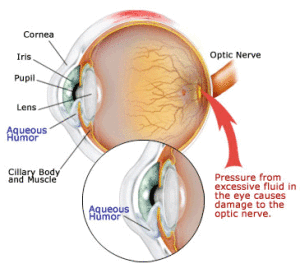
January is Glaucoma Awareness Month and the ophthalmologists at the USC Roski Eye Institute understand that the more people know about this serious condition, the better equipped they are at finding treatment for their conditions. With the following answers to frequently asked questions, you can find the help you need to preserve your eyesight.
What is glaucoma?
Glaucoma is a complex eye condition that causes high eye pressure, damaging the optic nerve, which is the nerve that connects the eye to the brain and is responsible for transmitting images to the brain. There are two main types of glaucoma: primary open-angle glaucoma (POAG) and angle-closure glaucoma, both of which damage the optic nerve, leading to vision loss.
Did you know that glaucoma is a leading cause of blindness in America?
- Approximately 2.7 million Americans have glaucoma with over half who have gone undiagnosed
- According to the World Health Organization it is the second leading cause of blindness in the world
- Over 120,000 Americans are completely blind from glaucoma, and this number continues to rise
What are the risk factors for glaucoma?
Those who are over 40, have a family history of glaucoma, poor vision, trauma to the eye(s) or are taking certain medications may be at risk of glaucoma. Rohit Varma, MD, MPH, Interim Dean of the Keck School of Medicine of USC, Professor and Chair of the Department of Ophthalmology, Director of the USC Roski Eye Institute, conducted multiple epidemiological population based studies and determined that groups at higher risk for glaucoma are those aged 40 or older, most prevalent in general Hispanic population and African Americans.
Is glaucoma preventable?
In general, blindness from glaucoma is preventable through early detection. The USC Roski Eye Institute specialists encourage you to have regular eye exams. Glaucoma can remain undetected, in patients with the disease, as they may show little to no symptoms. Patients can however, experience symptoms like vision loss, headaches, severe eye pain, halos around light, nausea and vomiting. If diagnosed and treated early, your eye doctor can prevent permanent vision loss and blindness. For early detection, eye specialists must directly examine the optic nerve and peripheral vision, and not just rely on pressure tests such as the standard puff tests which checks for high pressure. Even people with “normal pressure” can also have glaucoma.
Can undiagnosed glaucoma lead to blindness?
Glaucoma is a complex eye condition that causes high eye pressure, damaging the optic nerve, which is the nerve that connects the eye to the brain and is responsible for transmitting images to the brain. There are two main types of glaucoma: primary open-angle glaucoma (POAG) and angle-closure glaucoma, both of which damage the optic nerve, leading to vision loss.
Advancing technologies and treatments for glaucoma
If you believe you may be at risk, are over 50 years of age, or have family members with glaucoma, please get your eyes examined with an emphasis on assessing the optic nerve and peripheral vision. In general it is good practice to get regular eye exams. To make an appointment at the USC Roski Eye Institute, please call (323) 442-6335 or contact us to schedule a consultation today.
Topics
